23+ Sample School Emergency Action Plan
-
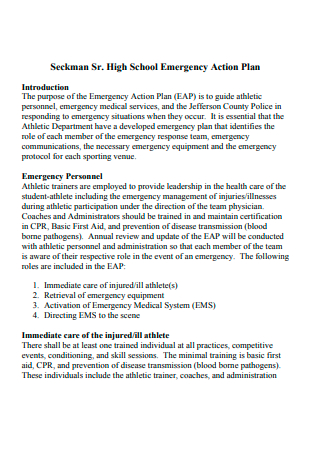
High School Emergency Action Plan
download now -

High School Athletics Emergency Action Plan
download now -
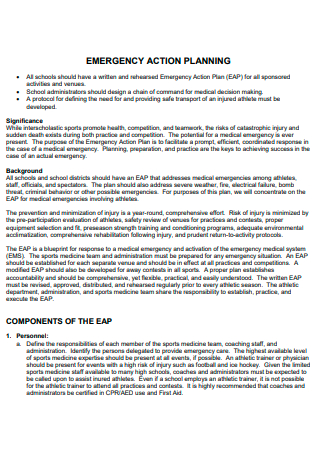
School Emergency Action Planning Example
download now -
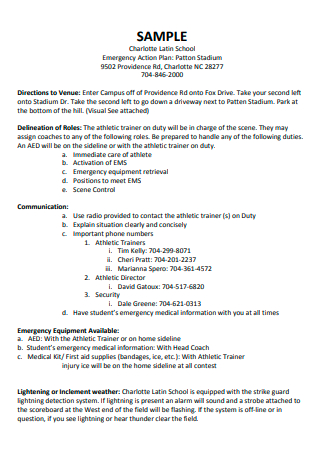
Sample School Emergency Action Plan
download now -

Polytech High School Emergency Action Plan
download now -
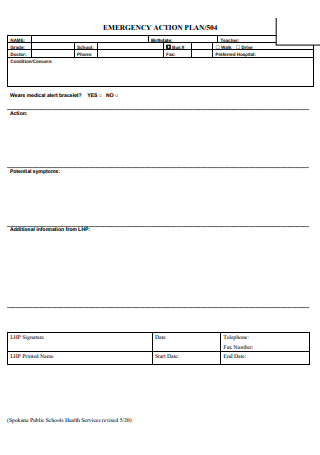
Basic School Emergency Action Plan
download now -
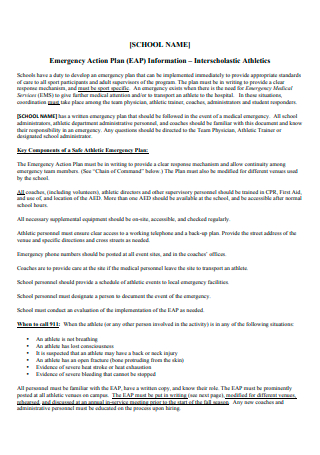
School Emergency Action Plan in PDF
download now -
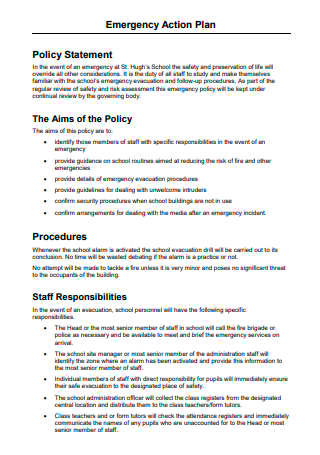
Standard School Emergency Action Plan
download now -
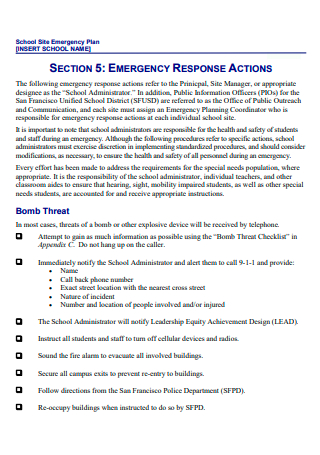
School Site Emergency Action Plan
download now -
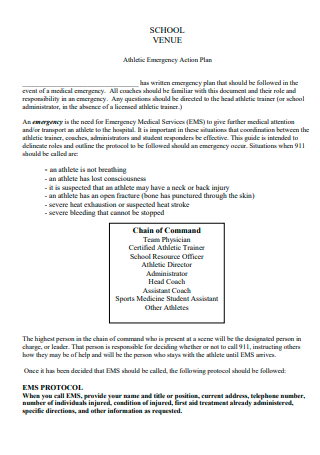
School Venue Athletic Emergency Action Plan
download now -
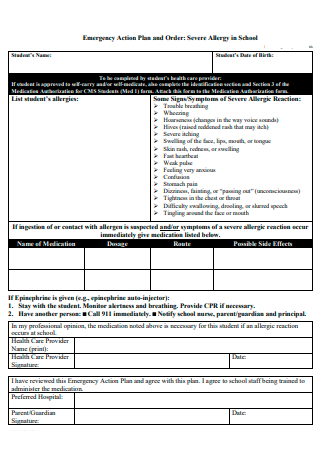
Severe Allergy in School Emergency Action Plan
download now -
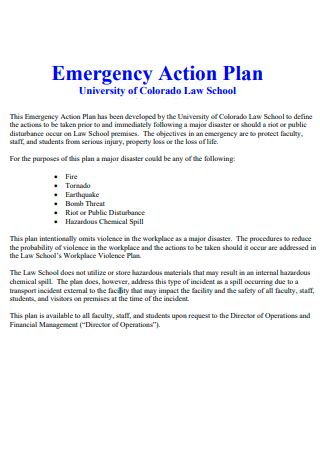
Law School Emergency Action Plan
download now -
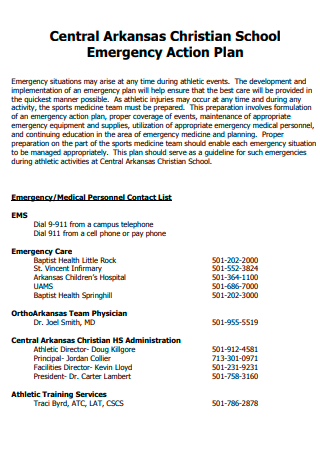
Christian School Emergency Action Plan
download now -
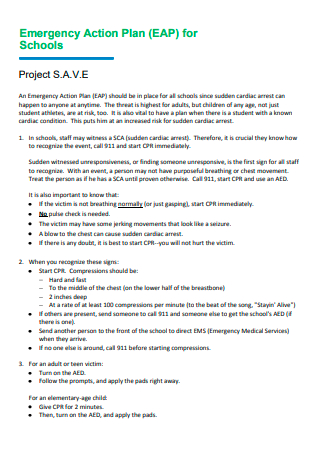
School Emergency Action Plan Example
download now -
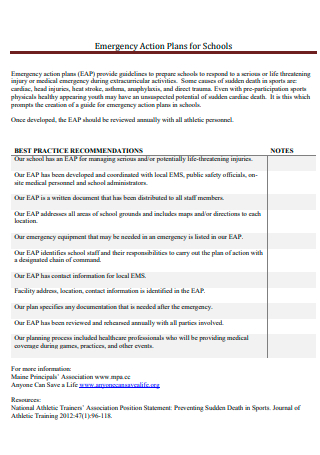
School Emergency Action Plan Format
download now -
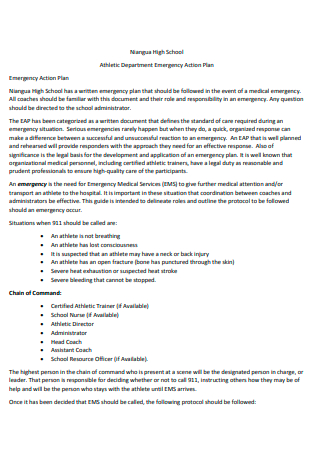
High School Athletic Department Emergency Action Plan
download now -
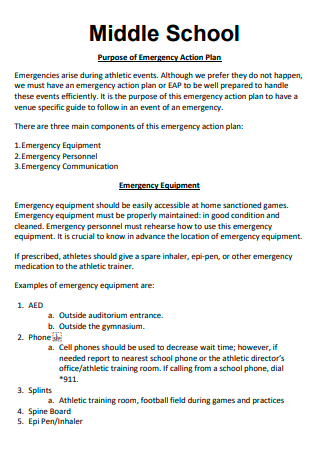
Middle School Emergency Action Plan
download now -
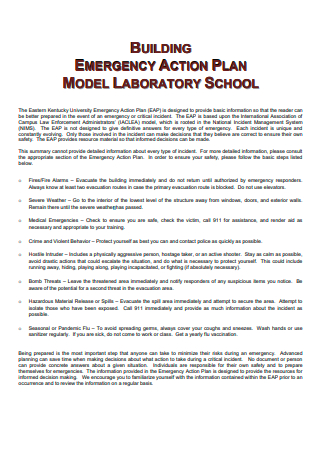
Model Laboratory School Emergency Action Plan
download now -
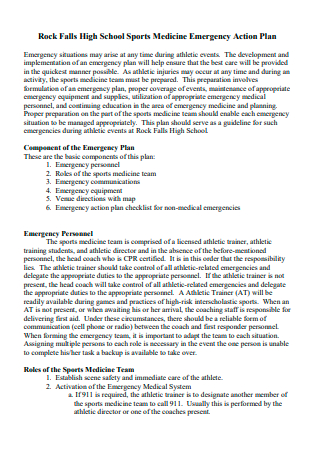
High School Sports Medicine Emergency Action Plan
download now -

Local School District Emergency Action Plan
download now -
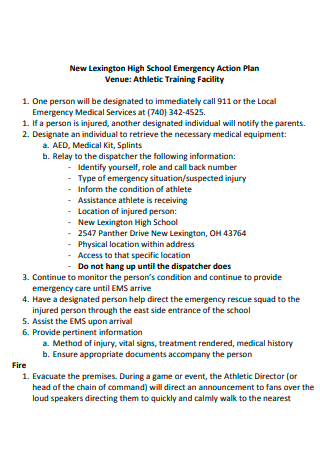
School Emergency Action Plan Athletic Training Facility
download now -
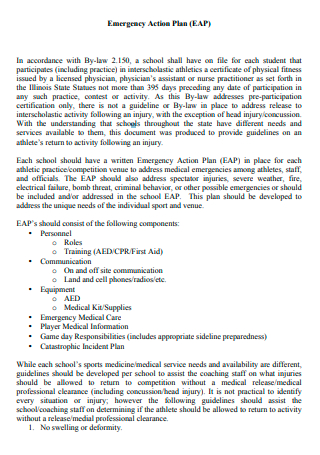
Simple School Emergency Action Plan
download now -
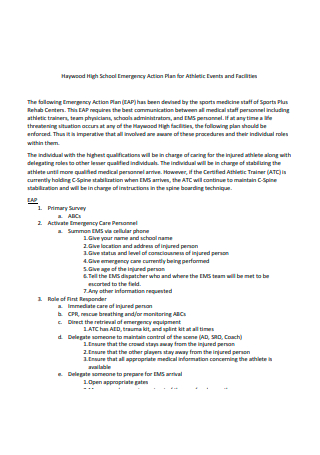
High School Emergency Action Plan For Athletic Events and Facilities
download now -
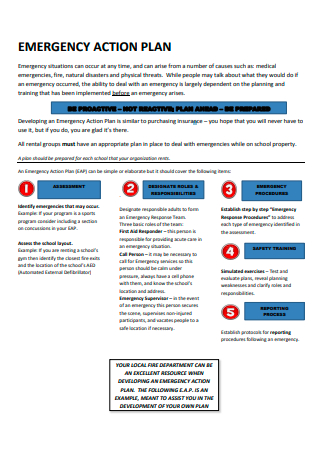
Printable School Emergency Action Plan
download now
FREE School Emergency Action Plan s to Download
23+ Sample School Emergency Action Plan
What is a School Emergency Action Plan?
What are the Key Components of a School Emergency Action Plan?
Types of Emergencies That Can Happen in a School
Step by Step Process in Preparing a School Emergency Action Plan
FAQs
What should the parents do when preparing for a school emergency?
What are active shooter drills?
After the emergency occurs, what should the parents do?
What is a School Emergency Action Plan?
A school emergency action plan is a business document that establishes all the necessary guidelines for all reasonably foreseeable emergencies that can happen inside the school. It also serves as an essential component of a particular school’s emergency procedures. The school emergency action plan should cover all bases, such as the procedures on mitigating and preventing emergency procedures, the steps necessary to prepare for a school emergency, what situations can develop or unfold during an emergency, and the appropriate plan to recover from the said emergency. This document also assigns roles and responsibilities to the faculty for proper implementation of the plan during an emergency.
For a school emergency action plan to properly work, it has to be well-developed and not just half-heartedly drafted for the sake of having one. Proper emergency training for the school faculty also has to be carried out for them to have a deeper understanding of their roles and responsibilities in an emergency.
What are the Key Components of a School Emergency Action Plan?
Since different schools have different layouts, a different number of buildings, and the amount of qualified staff, their emergency action plan also differs. However, for a school emergency action plan to properly work, it needs to have the following common key components in place:
Types of Emergencies That Can Happen in a School
Here are the types of emergencies that can happen in a school, some of which are more severe than the others:
- Weather Emergency – Depending on where the school is located, a weather emergency can range from nonstop rainfall leading to flash floods to a severe category EF5 Tornado. It is important to know that whenever you have to prepare for dealing with weather emergencies, you should prepare for the ones that happen frequently in your area. Since weather emergencies occur naturally, there is little to nothing you can do in terms of stopping them. However, there is plenty that you can do in terms of minimizing its impact, such as proper preparation and prioritization of tasks.
- Hazardous Materials – These can come from many different sources and some of them are beyond your control. It is essential to remember that early-level grade school buildings can still contain harmful chemicals inside them such as laboratory materials, insecticides, and cleaning materials. These chemicals should be properly accounted for frequently, and you should discuss with the immediate head or the science instructor regarding the safety measures and the appropriate hazard assessment procedures in dealing with these chemicals.
- Infectious Diseases – Widespread infections can have a drastic effect on a school’s ability to maintain educational continuity, such as the ongoing COVID pandemic. The established goals for emergency response can help you guide on planning for this type of emergency. Planning for remote or distance learning should also be given focus. Prevention methods must be planned accordingly too, such as frequent cleaning schedules and appropriate educational materials that concern with hygiene.
- Active Shooters – These types of events can still happen even if no one inside the school campus wants to think about it. School campuses should have good security measures in place in order to prevent these types of events from happening. Additionally, students should also be briefed or taught to report to the security personnel or someone in authority any type of suspicious activity. In turn, the faculty should also be trained on the appropriate measures in case it is too dangerous for them to lead the students outside their building.
- Human-Centered Factors – These can be one of the most devastating types of school emergencies but they are also one of the most preventable. Schools must have adequate plans in place for dealing with these kinds of emergency scenarios which can include bomb threats and gang violence. Other human-related school emergencies include substance abuse, depression, and even suicide. To properly deal with these types of things, measures such as limiting access to the campus, reviewing student behavior issues, and reviewing student absentee rates can be done. In dealing with someone suffering from depression, emotional support should be offered to the person in need.
Step by Step Process in Preparing a School Emergency Action Plan
Now that you are familiar with what a School Emergency Action Plan is and the various types of emergencies that can occur inside the school, here are the steps you can follow to prepare an effective school emergency action plan:
Step 1: Identify every possible emergency scenario that can happen.
The first step in creating an emergency action plan is to identify the types of emergencies that can occur inside the school premises. It can include everything such as fire emergencies, weather emergencies, natural disasters such as earthquakes, and something extreme like gang violence, active shooters, and bomb threats. It is important to not limit your response planning within the facility’s boundaries, as there are some external factors that can also contribute to emergencies. In writing an emergency action plan for the school campus, you also need to consider how each unique scenario impacts the facility and list all possible effects it has.
Step 2: Identify what to do and list down the tasks.
Understanding and identifying the various emergencies the school campus can experience helps with determining the appropriate actions you want the faculty and the students to take. No single emergency situation is simple and taken lightly, and you cannot just tell your employees to pack up and leave when everything seems chaotic. Clearly defining the possible and suitable response also helps with their safety. You should also list here the steps that the faculty should do should an emergency take place. In writing down the tasks, it is important to make them as simple and achievable as possible. If possible, add deadlines and/or milestones to ensure that the tasks are done and to keep track of the progress.
Step 3: Assign evacuation areas and familiarize the optimal evacuation routes.
Designating safe evacuation areas where the faculty, non-teaching staff, and students meet after an evacuation is of utmost importance. Also, creating alternative assembly points is recommended in certain situations wherein the primary assembly point is deemed too hazardous or has been compromised by the emergency that just occurred. Aside from an alternate assembly point, include various routes in case the pathways are blocked or unsafe. Having these secure locations is useless if anyone cannot reach them or if they suffer injuries along the way. It is important to double-check all the evacuation routes toward the assembly points created frequently to avoid possible obstructions and ensure that the way remains safe.
Step 4: Always account for every student and staff.
Create an effective system that guarantees every person on the school campus whether he/she is a faculty or a student is well accounted for after an immediate evacuation. You can assign team leaders for each floor or department to have an appropriate student or employee master list for verification once everyone has arrived at the designated evacuation area. For locations that use access cards or security verifications, guarantee real-time records for faster validation. One of the best ways to account for everyone is through implementing the buddy system, wherein the faculty workers or students pair up with one another and are responsible for knowing the whereabouts of each other.
Step 5: Create or prepare an appropriate emergency response drill.
The best way of doing response drills is to create a schedule. It is difficult to propose a response drill if every teacher is too preoccupied with lesson plans or school projects. Before issuing the exercise, take note of the location and the number of participants joining. If setting up drills is out of the question, holding a meeting with small teams within the faculty room and discussing the appropriate evacuation plans with the students after the said meeting can serve as an effective alternative approach. In doing so, you can emphasize the importance of evacuation. It also serves as a way to help the teaching faculty and staff understand their roles whenever they are being gathered at a safe evacuation area during an emergency.
FAQs
What should the parents do when preparing for a school emergency?
The best thing that a parent can do is to be an advocate for their children. They can ask the teachers about the safety measures that the school has put in place for emergencies. They can also ask about how frequently the school officials meet with the safety experts to tackle about safety measures. The main thing that a parent can do is to make themselves aware of the information that is shared with them.
What are active shooter drills?
These drills are performed in order to prepare students and let them know what to do in case an active shooting takes place inside the campus. These drills require students and staff to remain on lockdown in a designated area and practice specific emergency procedures such as staying silent, locking the door, and completely turning off the lights. They can also include distracting the shooter, evacuating the area, and fighting back. In some cases, active shooter drills can be unannounced.
After the emergency occurs, what should the parents do?
The first thing they can do is to provide emotional support and look for signs that their kid wants to talk to them. They should also be aware of the signs that their child is in distress such as changes in their behavioral patterns, development of anxiety, irregular sleeping and eating habits, and problems with their school work.
On a school campus, most days come and go without any concerns regarding safety. It is important to know that while having a plan for dealing with an emergency is important, the steps for prevention should also be not neglected. It is important to be prepared for the worst scenario while hoping for the best, even if a school day goes on normally. In this article, examples of an effective school emergency action plan are provided to you for personal use.
